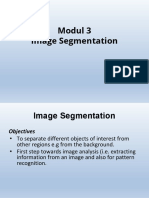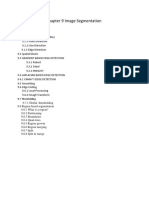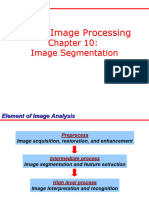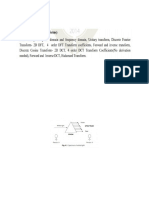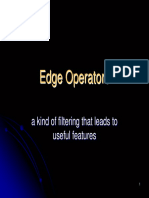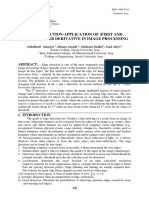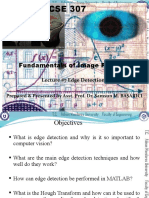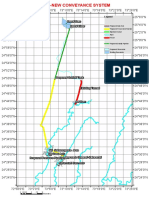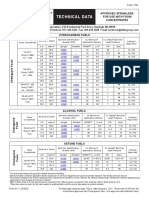0% found this document useful (0 votes)
10 views10 pagesMip Unit 3
The document discusses various segmentation and restoration techniques in image processing, focusing on the definition of Region of Interest (ROI), detection of discontinuities, edge linking, and boundary detection. It elaborates on methods such as point and line detection, edge detection using first and second derivatives, and the Hough Transform for edge linking. Additionally, it highlights the importance of efficient processing and integration with machine learning for applications in medical imaging, object detection, and surveillance.
Uploaded by
Thiyagu RajanCopyright
© © All Rights Reserved
We take content rights seriously. If you suspect this is your content, claim it here.
Available Formats
Download as DOC, PDF, TXT or read online on Scribd
0% found this document useful (0 votes)
10 views10 pagesMip Unit 3
The document discusses various segmentation and restoration techniques in image processing, focusing on the definition of Region of Interest (ROI), detection of discontinuities, edge linking, and boundary detection. It elaborates on methods such as point and line detection, edge detection using first and second derivatives, and the Hough Transform for edge linking. Additionally, it highlights the importance of efficient processing and integration with machine learning for applications in medical imaging, object detection, and surveillance.
Uploaded by
Thiyagu RajanCopyright
© © All Rights Reserved
We take content rights seriously. If you suspect this is your content, claim it here.
Available Formats
Download as DOC, PDF, TXT or read online on Scribd
/ 10










